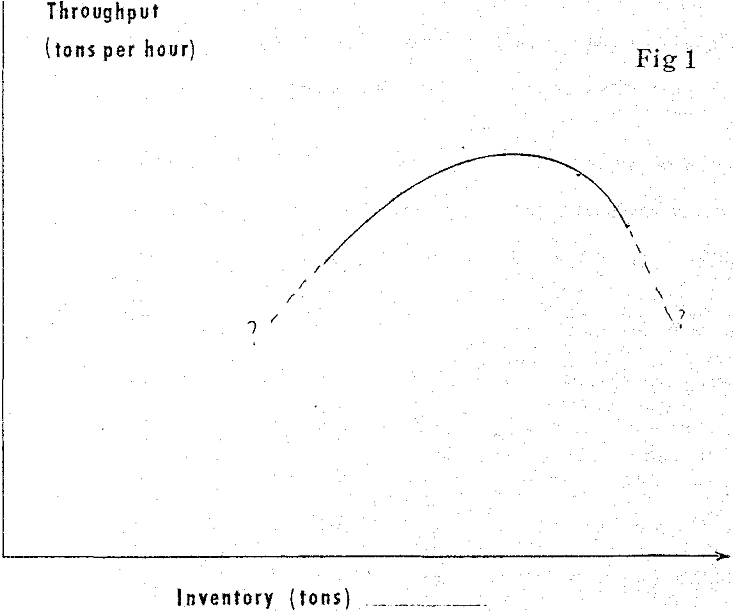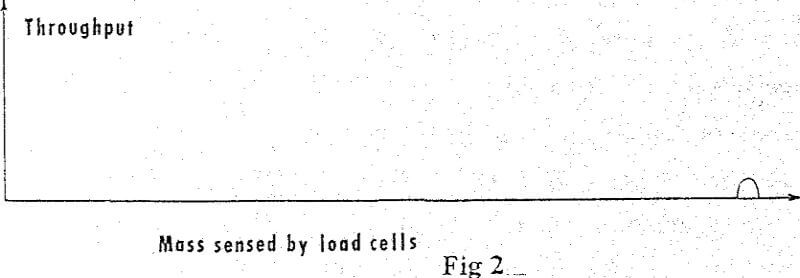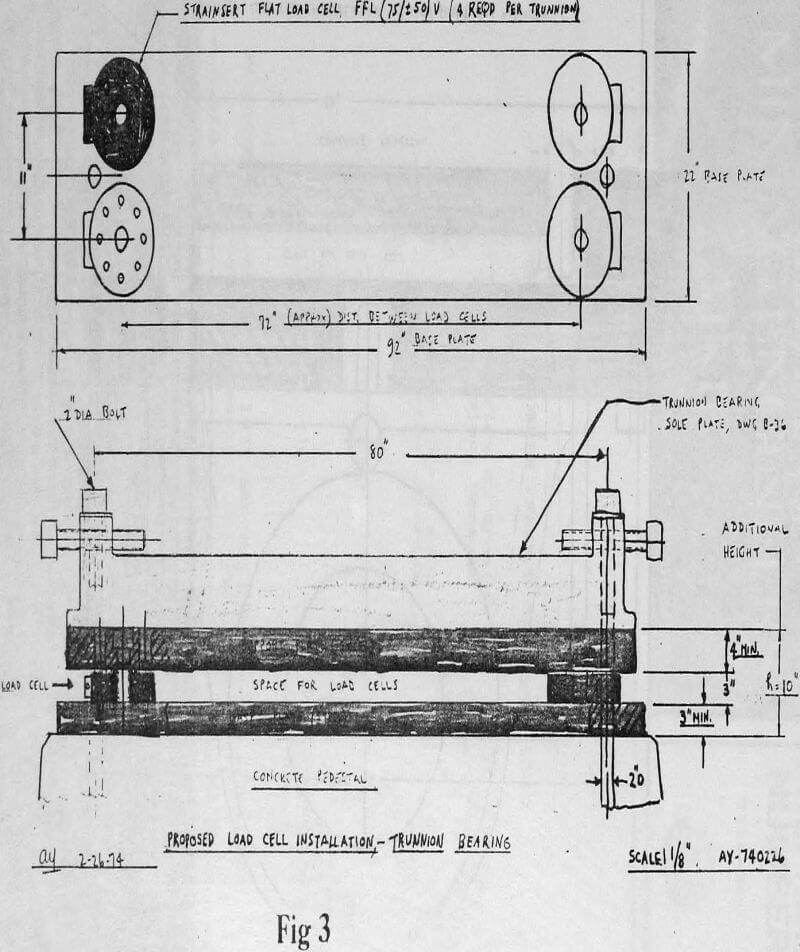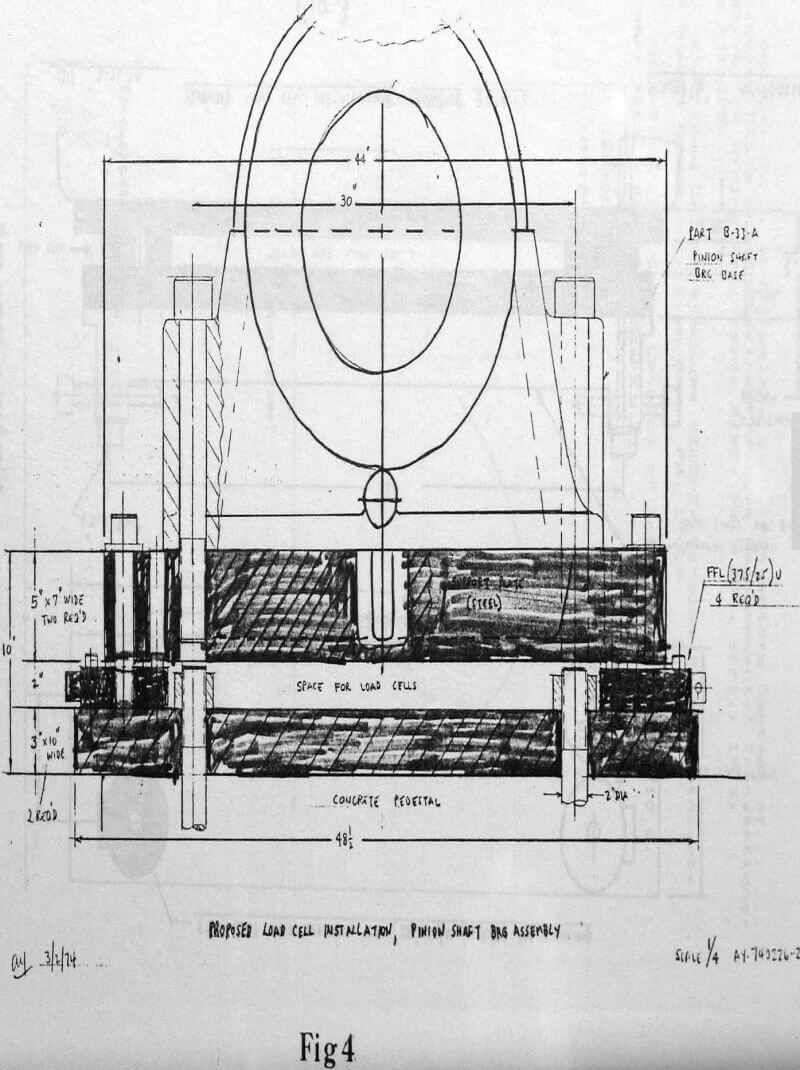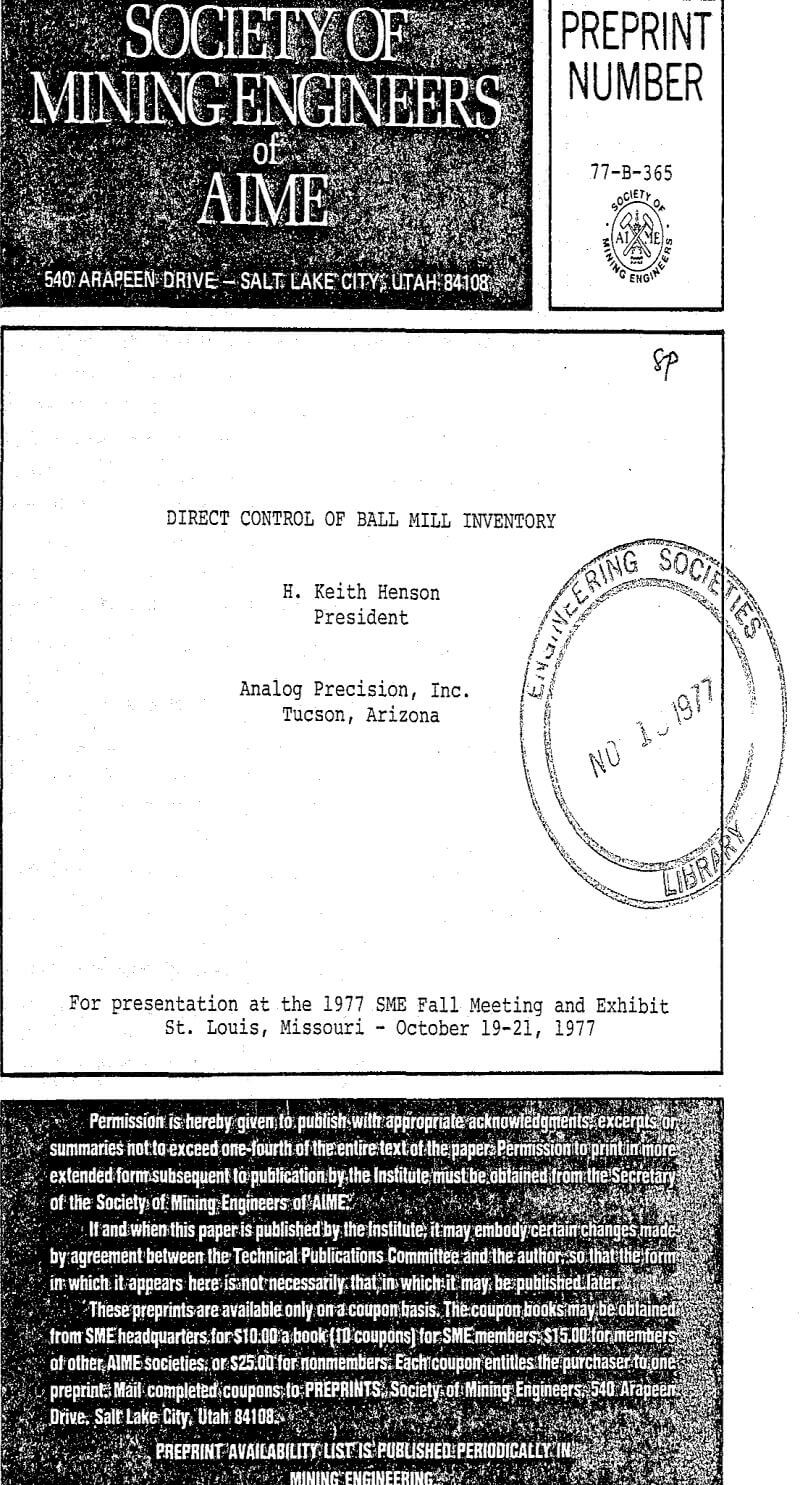Direct control of ball mill inventory has been the goal of a number of investigators over many years. To put some numbers on these concepts consider a 250 ton mill with 3 nominal 10 ton inventory that should be controlled to one part in forty that is a 2.5% band or ¼ ton. This will require a weight resolution of ±0.05%. Fortunately, this level of resolution does not tax the performance of modern high accuracy flat load cells, but it does require that pinion bearings be supported on load cells as the variation in force exerted by the pinion sear is larger then the required resolution.
Flat load cells have other advantages. The compact size a foot in diameter and a few inches thick and great resistance to bending torsion and side loads results in rugged and simple designs for supporting trunion and pinion loads. Mechanical alignment is preserved by the low deflection of the load cells typically .001 to .004 inches. Flat load cells were originally designed for fatigue testing of aircraft where tens of thousands of full load cycles were expected.
The ability to control mill inventory by mill weight is of little use by itself. The problem is that drift in the correct value of weight due to ball and liner wear is about the same magnitude as the entire span from zero to full inventory. Steel consumption is so well known that a programmed tare weight adjustment would probably work, but another way seems simpler.
